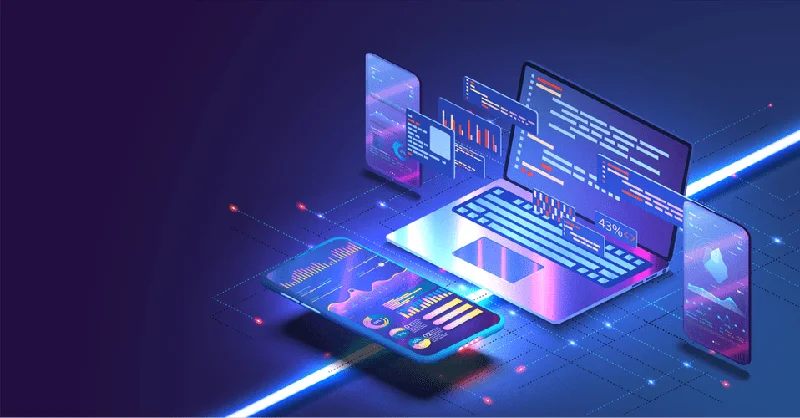How to create a block chain guide for creating a core blockchain network
John Terra lives in Nashua, New Hampshire and has been writing freelance since 1986. Besides his volume of work in the gaming industry, he has written articles for Inc.Magazine and Computer Shopper, as well as software reviews for ZDNet. More recently, he has done extensive work as a professional blogger. When it comes to acquiring relevant, marketable skills, there’s nothing as good as taking courses through an accredited training provider.

Even the first use case for blockchain is a crypto-coin bitcoin which changes how two parties connect and transfer funds to each other. That’s why you should take your proper time to design the blockchain instance. Lastly, you also need to design the operating system of the nodes. You can go with the free Linux operating systems such as CentOS, Fedora, Debian, or Ubuntu.
Add Data to Your Blocks.
You can make a new cryptocurrency without first creating or modifying any blockchain. Platforms like the Ethereum blockchain are designed to host the cryptocurrencies of many different developers. You can find the source codes of most blockchains on the GitHub platform. And then, finally, you are ready to mint your new cryptocurrency.
Binance Launches Summer Internship Program to Develop the Next … – CXOToday.com
Binance Launches Summer Internship Program to Develop the Next ….
Posted: Thu, 15 Jun 2023 09:04:30 GMT [source]
Network nodes verify transactions and record them in a publicly dispersed ledger called a blockchain. Each node in the network updates and preserves the blockchain continuously. That’s why Blockchain technology is especially known for its security, as it is very difficult to tamper with data once it has been recorded on the blockchain. Furthermore, the cryptographic hash makes it nearly impossible to alter data without it being detected. By Nday SinaiSo, instead of a centralized database, all the transactions that are shared across the nodes are contained in blocks, which are chained together to create the ledger.
I want to actually build a blockchain! Show me how to do create a blockchain
ScienceSoft designed and implemented a private blockchain network to trace goods and verify their authenticity at each stage of the supply chain. The team also developed smart contracts to automate supply chain processes, and introduced different web apps for manufacturers, distributors, and stores to interact with the blockchain network. Software development is also taking advantage of blockchain technology to solve several issues with mobile and IoT app development. Blockchain applications have the entire data encrypted with a cryptographic hash and all changes visible to everyone in the network, thus making the apps far more secure. And as every node in the network has an exact copy of the information stored and any changes must be confirmed via consensus, the entire system is virtually tamper-proof and resistant to system failures.

It involves thousands of components across many suppliers, customers, and locations. Michael Train, the president of Emerson, told us that such supply chains often have to contend with long, unpredictable lead times and lack of visibility. As a result, a small delay or disruption in any part of the supply chain can lead to excess inventory and stock-outs in other parts. He believes that blockchain could help overcome these challenges. When blockchain record keeping is used, assets such as units of inventory, orders, loans, and bills of lading are given unique identifiers, which serve as digital tokens . Additionally, participants in the blockchain are given unique identifiers, or digital signatures, which they use to sign the blocks they add to the blockchain.
How To Build A Blockchain App with Ethereum, Web3.js & Solidity Smart Contracts
We will get the block hash by hashing the previous block hash, current block data, timestamp, and PoW using the SHA256 algorithm. We will use crypto, a built-in library of NodeJS for hashing the data. Blockchain started in 2008 as a way to store and secure digital currency.

The first step in blockchain application development should always start with problem identification and searching for ideas to address the problems with a decentralized app. Blockchain is a decentralized peer-to-peer network consisting of data blocks. These blocks, which are chronologically added to the blockchain, form digital blocks of transactions. Each block contains and stores the numbers of each transaction happening in the blockchain. Every time a new transaction occurs on the blockchain, a record is added to the ledger.
Option 1: Create your own blockchain and native cryptocurrency
Metamask will also allow us to manage our personal account when we connect to the blockchain, as well as manage our Ether funds that we’ll need to pay for transactions. Yes, you can create your own Python blockchain in less than an hour by simply using Python code to define a single block/record, define your blockchain, define a proof-of-work system and a mining procedure. Hashing each block ensures the security of each one individually, making it extremely difficult to tamper with the data within the blocks. Now that we’ve established a single block, we need a way to chain them together. Now that we have implemented all the functionality of our Blockchain, we need to check for the authenticity of the blockchain so that we can validate the blockchain has not been tampered with.

ScienceSoft’s consultants help analyze the economic feasibility of blockchain implementation. We work in close collaboration with project stakeholders to get an in-depth understanding of the company’s blockchain needs and introduce a list of tangible benefits that the blockchain technology can bring. We also conduct a thorough analysis to present a high-level implementation costs breakdown how to build a blockchain and ROI calculations. There are two main approaches to implementing a blockchain network, each having its benefits and limitations. The choice of a particular approach depends on a company’s specific business needs and requirements to the implementation time and budget. Blockchain software ensures full transparency, topflight security, and fast processing of data and transactions.
Key Types of Blockchain
Our blockchain developers follow a sound process to test quickly and get product maturity at an early stage. With the experience of building 100+ blockchain-powered solutions, we have tailored our process to align with the constant evolution of blockchain technology. Effective cryptography is essential to ensuring a secure blockchain environment and preventing people from tampering with individual transactions. Developers should have a strong foundation in cryptographic concepts and practices, including wallets, keys, digital signatures and symmetric/asymmetric encryption. They should know how to use public key cryptography to prevent unauthorized access to data and understand the differences between cryptographic hash functions such as SHA-256 and Keccak-256.
- As a result, validators have a long-term commitment in return for a short-term loss when they burn tokens.
- Despite the fact that they provide a significant amount of functionality out of the box, this is still the case.
- The hash of the block is the Identifier generated using the cryptographic technique.
- Over the last few years, many derivate and blockchain-inspired projects have been created.
